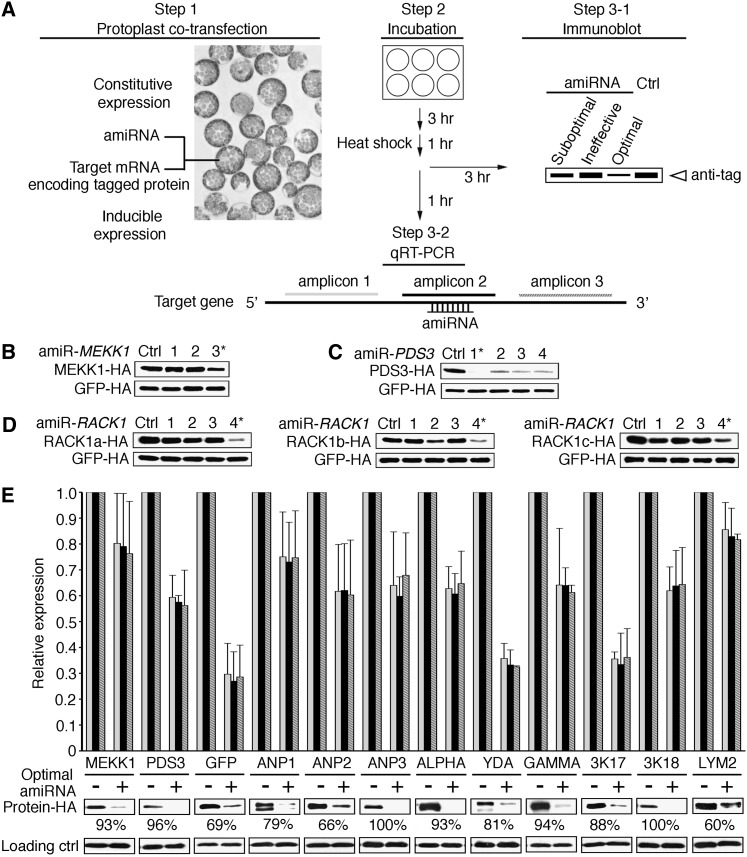Figure 5.
Optimal AmiRNAs Act Predominantly via Translational Repression.
(A) Scheme of the rapid ETPamir screen. AmiRNA candidates were constitutively expressed, whereas the target mRNAs were expressed under the control of heat shock promoter. Ctrl, control.
(B) Quantification of MEKK1-HA protein 3 h after heat shock. The most efficient amiRNAs are marked by asterisks.
(C) Immunoblot of PDS3-HA protein 3 h after the heat shock pulse.
(D) Immunoblot of RACK1-HA proteins 3 h after the heat shock pulse.
(E) Parallel quantification of target transcripts by qRT-PCR and target proteins by immunoblot. The qRT-PCR was conducted with at least three biological repeats using three pairs of primers as shown in (A), aiming at the 5′ end (light gray), the amiRNA target site (black), and the 3′ end (dark gray with white stripes), respectively, within the CDS of the target gene. The quantitative PCR data obtained using the same pair of primers were first normalized against UBQ10 expression levels before they were used to determine the relative transcript levels of each target gene with or without silencing. The efficacy of protein silencing was calculated based on densitometric analysis of immunoblot signals of at least three independent repeats and is presented as the mean value.
In (B) to (E), at least three independent repeats with heat shock–inducible GFP-HA (or LUC for GFP silencing) as an internal control produced similar results.

